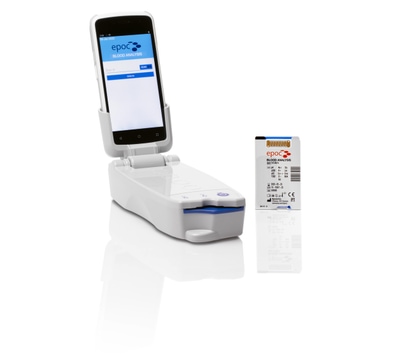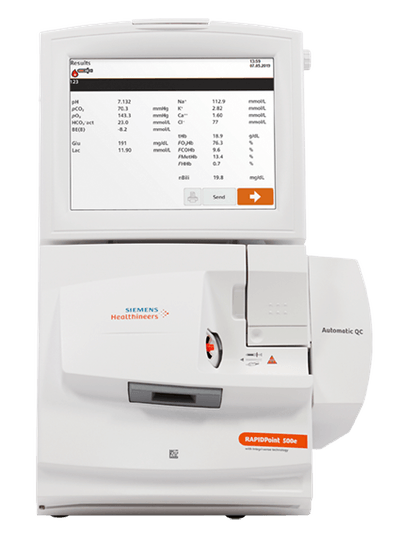- TOP
- In stock
.png)
Sort
Found 3 results
Sort:
.png)


A modern blood gas and electrolyte analyzer is a high-tech medical device used to measure the levels of various gases and metabolites in a blood sample. These analyzers are crucial for assessing respiratory and metabolic function and help in the treatment of conditions such as respiratory failure, acidosis and alkalosis. These indicators are especially important for the correct management of patients receiving mechanical ventilation of the lungs. Incorrect interpretation of blood gas analysis results can lead to unnecessarily long mechanical ventilation and treatment in the intensive care unit, as well as the presence of complications. The pH level is one of the most important indicators measured by modern blood gas analyzers because it is one of the factors affecting brain perfusion. This analysis is important in cases where normal homeostatic mechanisms and reflexes may be seriously impaired (for example, during deep anesthesia and seizures).
Key components and functions of a modern blood gas analyzer:
Features of modern blood gas and electrolyte analyzers:
Modern blood gas and electrolyte analyzers are divided into several types depending on the functionality and operating conditions. The main types are:
Analyzers are indispensable in intensive care units, operating rooms, intensive care units and laboratory departments. They help monitor acid-base balance, electrolyte status, and blood gas levels, which is essential in the treatment of patients with cardiovascular, renal, and pulmonary disorders. In particular, the analyzers are used to diagnose and monitor acid-base disorders such as metabolic acidosis, alkalosis, respiratory acidosis, or alkalosis. They also assess respiratory function, including oxygenation and ventilation, in patients with COPD, asthma, ARDS, or during anesthesia. In intensive care units (ICUs), analyzers monitor the condition of patients with serious illnesses, injuries, or during postoperative recovery. The use of such devices allows for timely adjustment of therapy, assessment of treatment effectiveness, and monitoring of patient progress.
In Ukraine, electrolyte and blood gas analyzers can be purchased at specialized medical equipment stores. For example, the Empirica online store offers a wide range of such devices at affordable prices. To choose the right analyzer, you should consider the needs of your laboratory or medical institution, the technical characteristics of the equipment, the level of measurement accuracy, and operating conditions.